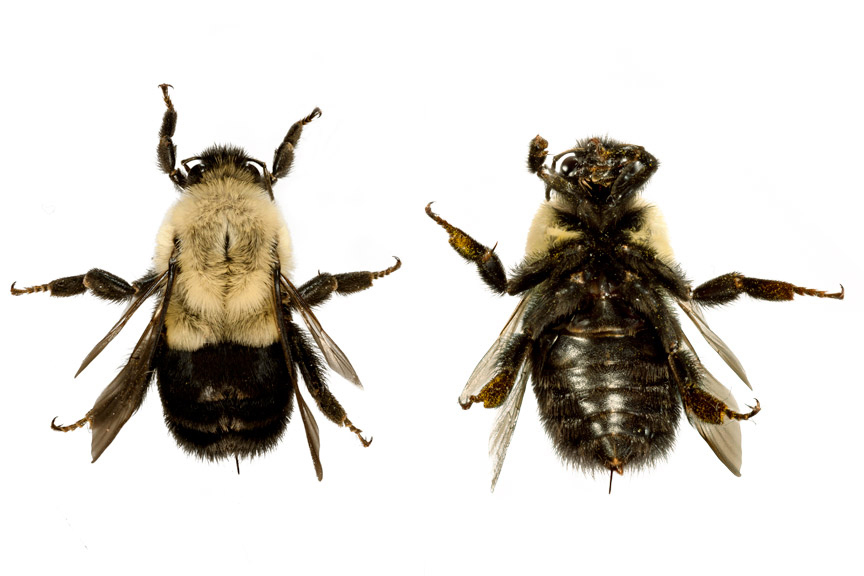
The bombus impatiens is typically known by the more popular name, the bumble bee. They are named as such for the way in which they appear to fly – bumbling around while collecting nectar. These bees are common pollinators of plants due to their foraging habits that lead them to collect nectar, and distribute pollen. Colonies of bumble bees can range in population from thirty to two thousand bees. Nests are usually found in holes underground, or other small hidden spaces. The life cycle of a worker bumble bee is short – they are born in the spring, live through the summer to collect nectar for the hive, and die in the fall when the weather turns cold. Queens will survive the winter and can live up to one year if they are fertilized. Three types of bees exist within bumble bee colonies: queens, worker bees, and males. The queens are in charge of establishing a nest and caring for eggs, while worker bees collect nectar and pollen for the colony. Males are in charge of impregnating the queen. Queens can produce queen, male, and worker bees. Worker bees can also produce other male worker bees, but only do so in the late summer, after the queen has mothered the first generation of worker bees.
Head
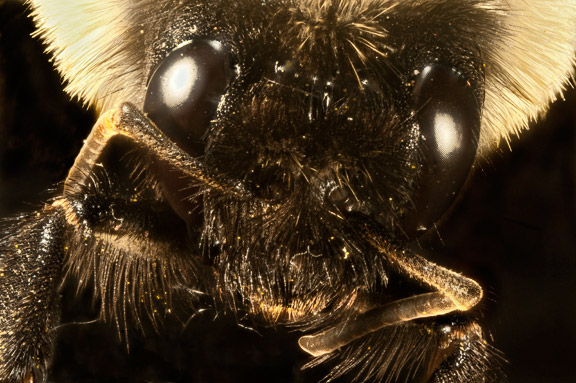
The head of the bee has two sensory antennae, along with simple and compound eyes that allow the detection of polarized light. Additionally, bumble bees have a paired mandibles, a tongue, a labrum, and two maxillae. The labrum and maxillae act as lips to support the proboscis that collects nectar.
Eyes
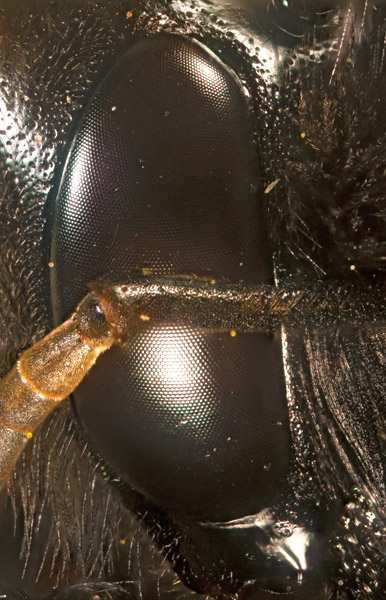
Despite being extremely tiny, the eyes of bumble bees are extremely complex. Each bee has two large compound eyes that contain over three thousand ommatidium. Each ommatidia act as an individual hexagonal lens for perceiving color and light intensity. Each ommatidia provide a basic pixel-like image to the brain. Every bumble bee also has three smaller eyes on the top of its head used for calculating the angle of the sun to find the flower at which they last gathered pollen and nectar.
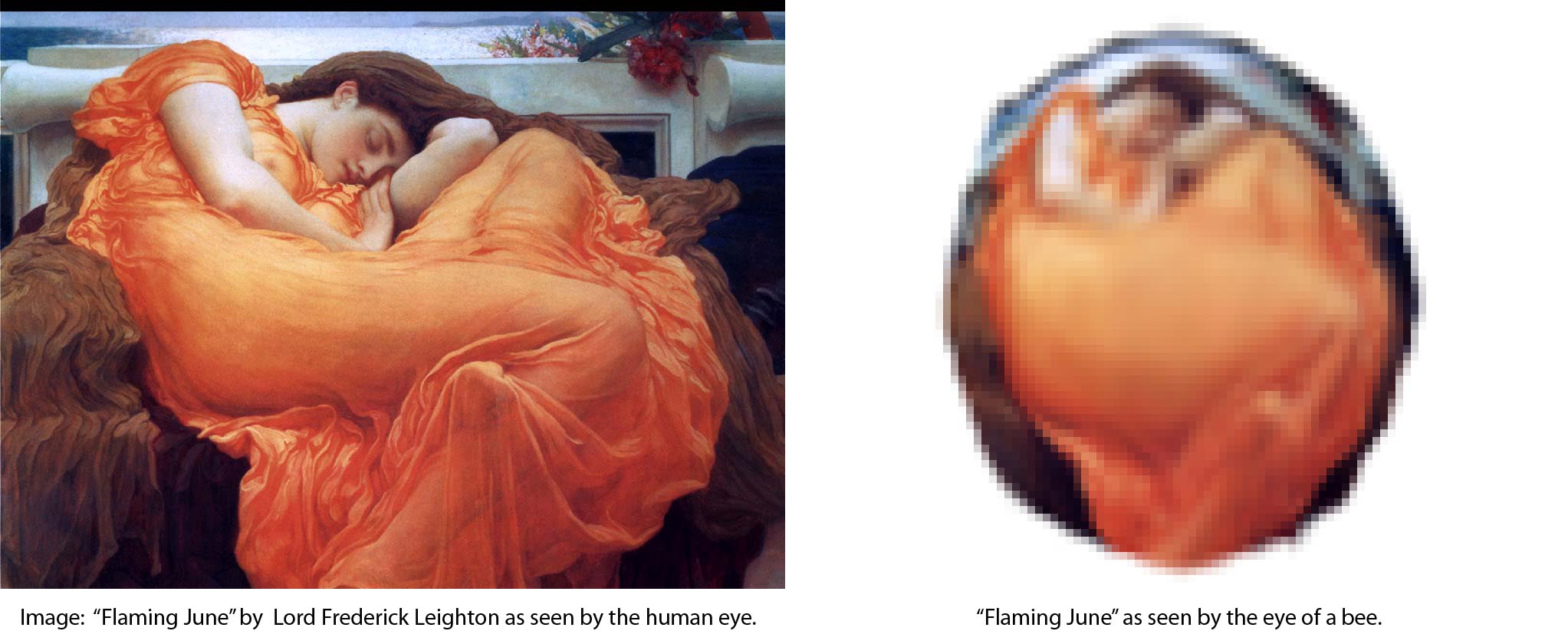
Stinger
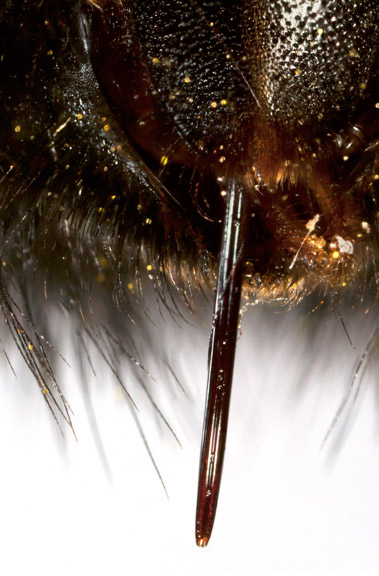
Only queen and female worker bumble bees have stingers and will sting humans if irritated by their nest. If these bees are foraging for nectar, they are rarely aggressive. When in their hive, bumble bees can detect changing scents in the air (breath, sweat, perfume, even the scent of oxidizing metal from rings or watches); any change they perceive will cause them to be on alert, and they may seek to sting the cause of this change. As seen here, the stinger lacks barbs, allowing the bumble bee to sting its victim multiple times. Bee venom contains an excess of protein called mellitin, along with histamine and other enzymes – all of which can cause reactions in humans.
Hair
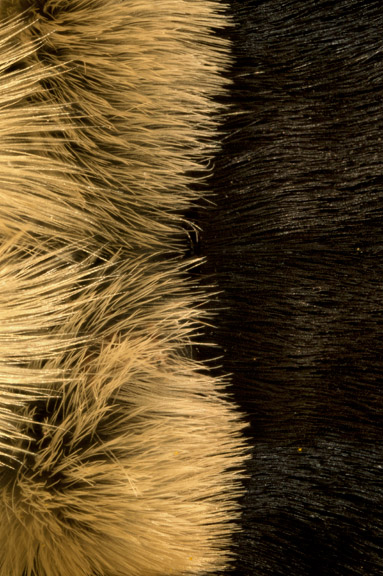
This particular type of bumble bee, Bombus impatiens, is known for having yellow hair on its thorax, and black hair on its abdomen. The legs of Bombus impatiens are typically black, with a speckling of yellow or orange hairs.
Wings
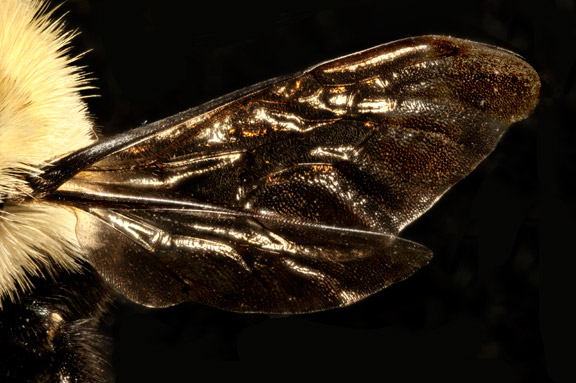
All bees have two sets of wings connected to the thorax that are also attached to each other by a series of hamuli hooks. Bumble bees in particular have light-colored wings, and can beat their wings anywhere from 130 to 240 times per second. Worker bees will visit flowers up to half of a mile away to forage, They can fly ten to fifteen feet per second. The thorax of the bumble bee consists mostly of flight muscles. These muscles cause the wings to flap and swivel, instead of flapping straight up and down.
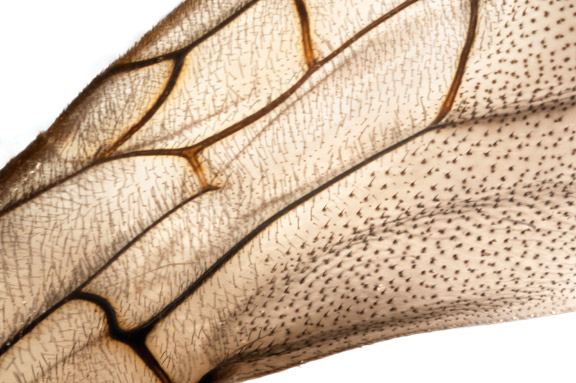
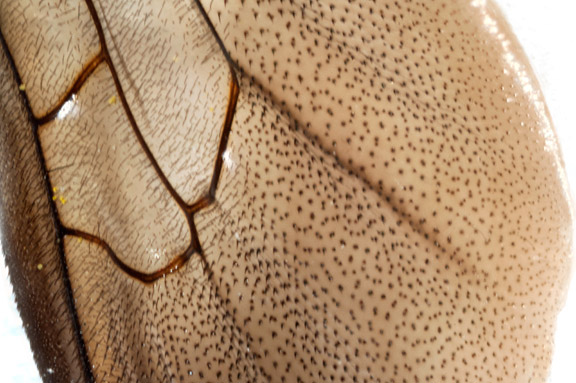
Legs and Hooks
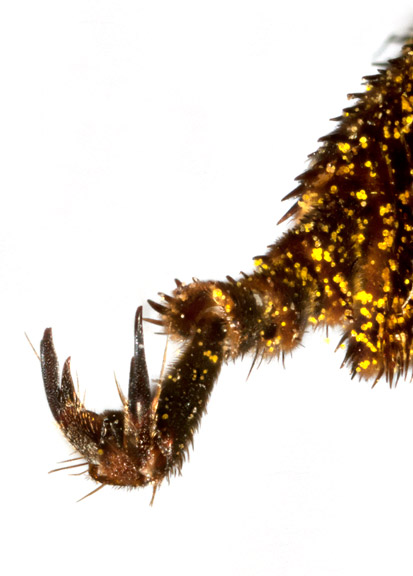
The bumble bee's back legs are covered in hair, for the sole purpose of attracting pollen. The pollen is collected into the corbicula, otherwise known as a pollen basket, located on the back of the tibia. The bee packs pollen and nectar into the coribicula and delivers it to the colony. This process to pack pollen and deliver it back to the hive can take an individual worker bee anywhere from three to thirteen minutes.
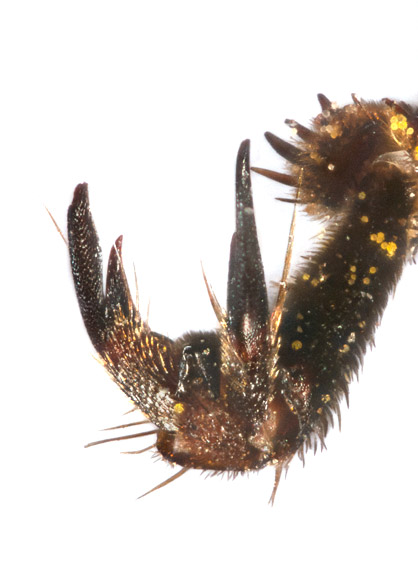
The pads and claws of a bumble bee function as a way to grip and manipulate objects such as leaves, flower stamen, and stems.
Photographic Equipment
These photographs were taken using a Nikon D5000, 60mm Macro Lens, Nikon PB-6 bellows, 38mm Thimble Lens, and a 20mm Thimble Lens. The light used was a fiber optic flash with three pipe lights and diffusers placed equidistant around the subject.
About Me
Julie Ducharme is currently a student in her fourth year at Rochester Institute of Technology majoring in Biomedical Photographic Communications, with concentrations in Surgical Photography, Ophthalmic Photography, and Premedical Studies. Her passion and goal in life is to show others how beautiful science and medicine can be through the art of imagery.
Contact Info
Julie Ducharme
Email: julie.ducharme@gmail.com
Website: www.julied.me